This installment of New Player’s Guide is a little bit more casual than usual. That’s because I’m talking about a specific element of my home D&D campaign that I think will improve yours, rather than sharing broad wisdom that I’ve learned over the years. Let’s talk about handouts!
First, Some Backstory
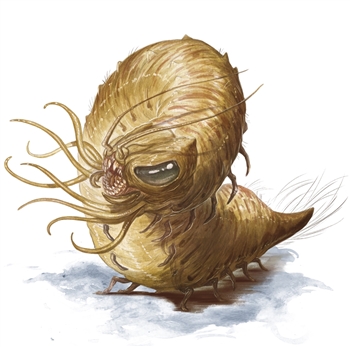 A few weeks ago, some of my players delved into the Underdark-like caverns beneath the Isle of the Dawn, the island fortress-city that my current campaign is based out of. This campaign draws heavily from the lessons on running urban adventures I learned writing and playing Waterdeep: Dragon Heist, but there’s one lesson that I’ve learned more recently. It seems self-evident, but I missed it completely while running Waterdeep: give the characters ample opportunity to leave the city on short excursions. This adventure could take them into the dangerous caverns below the paved streets, or it could involve them getting on a boat and sailing to the mainland for some more typical fantasy adventures before returning to their home base.
A few weeks ago, some of my players delved into the Underdark-like caverns beneath the Isle of the Dawn, the island fortress-city that my current campaign is based out of. This campaign draws heavily from the lessons on running urban adventures I learned writing and playing Waterdeep: Dragon Heist, but there’s one lesson that I’ve learned more recently. It seems self-evident, but I missed it completely while running Waterdeep: give the characters ample opportunity to leave the city on short excursions. This adventure could take them into the dangerous caverns below the paved streets, or it could involve them getting on a boat and sailing to the mainland for some more typical fantasy adventures before returning to their home base.
(What about handouts? We’re getting to it—this set-up is important.)
One challenging aspect of running an urban adventure is handling information. It’s easy enough for folklore and oral legend to be the only information available to adventurers while they’re investigating ancient tombs out in the wilderness. But when your adventure hooks tend to start in the big city—especially in a city like mine, where the characters have easy access to a well-maintained monastic library—the DM has to be ready to prepare information ahead of time.
Obviously, you can always do what DMs do best: improvise lore as necessary and fly by the seat of your pants. But if you want to wow your players with your masterful presentation and attention to detail, one easy way to do so is to create handouts. These handouts are invaluable tools for the DM who has planned out an adventure for the players and really wants them to commit to that adventure. For example, in my campaign, the heroes delved into the caverns beneath the isle because they needed silk produced by carrion crawlers in order to craft a garment of the finest pride silk—a material stolen and adapted from Explorer’s Guide to Wildemount.
Once they learned about the silk, they decided that they didn’t want to go into this situation without doing proper recon. (If your players aren’t interested in doing recon, there’s not much you can do about it. However, if they don’t know that researching dungeons and caverns and creatures is an option, suggest it to them! You could be subtle and have a friendly NPC tell them in-character, but you don’t have to be. Just telling your friends “hey don’t forget you can do research” is a perfectly valid approach.)
They didn’t know jack about carrion crawlers or their habitat, so they went to the monastery’s library and did some research. That’s when I unveiled the handout: a two-page document I’d written in the voice of a scholar of the isle, detailing not just the whys and wherefores of carrion crawlers, but also other creatures that are known to share their habitat. Here’s that handout (if blurry, click to zoom in):
What I Like About this Handout
This handout was effective for me and my group. I won’t call it universally applicable, but there are things about it that served me well, and that I think will serve you well, too.
In-World Knowledge. Lore dumps aren’t usually very fun. The DM monologuing to the players tends to bore them. But turning that monologue into fallible, opinionated, in-world information gives that lore character. Even if, like on this handout, no character is named, it’s clearly written in the voice of a scholar writing an essay on natural philosophy.
The use of line-art sketches on this document (created by the masterful Brynn Metheney for the Monster Manual) also add to this in-world atmosphere. Full-color art from D&D books are gorgeous, but they have a polished tone that doesn’t quite fit an in-universe document. Use of fonts that mimic handwritten cursive or calligraphy enhances this tone.
Mechanical Knowledge. This handout rewards players that read it carefully. It talks about more than just lore: it gives tips that will help them survive combat encounters. It notes that carrion crawlers like to lair on cavern ceilings and drop upon their prey. It recommends stocking up on antitoxins to avoid their paralytic poison. Some lore can even be used as tactical knowledge; if I describe a room as “smelling of rot and decay,” they might wisely deduce to look up at the ceiling, suspecting that a carrion crawler is nearby.
Roleplaying Information. Even though the ropers mentioned in this document didn’t show up in the adventure they went on, their inclusion provided a sense of suspense and tension. Had a roper appeared, this information would have given them a nonviolent solution to a deadly problem: a roper attack against 3rd-level characters: a rumor that some flesh-hungry ropers are capable of sapient thought and might be swayed to release adventurers if they promise to pay them tribute in the form of treasure or a replacement meal.
How to Make a Great Handout
Your ideal handout is probably rather different from mine. You’ll include different varieties of information, and your handout will serve different purposes. Your handout might depict a tile mural rather than sketches and handwriting on parchment. Nevertheless, these simple graphic design tips will help you create handouts that will help you take your DMing skills to the next level.
Find Good Fonts. This whole handout business is an exercise in aesthetics, so you might as well go hard on the aesthetics of your font. Fonts are expensive as hell, but there are a number of fonts available for free as long as you don’t use them in a commercial project. Google Fonts is a good place to start looking for fonts, but there are dozens of websites out there. Since I subscribe to the Adobe Creative Cloud for work, I make heavy use of Adobe Fonts—but that is decidedly not a cheap resource, unless you’re already a CC user for programs like Photoshop or InDesign.
- BrokenscriptOT Bold is the name of the font I used for the header in my handout
- Avalon Regular is the name of the font I used in the body of my handout
Start with Word. If your handout will include text, like mine did, then there’s no better starting point than Microsoft Word—or an equally powerful word processor. Google Docs is okay, but you can’t use custom fonts like you can on app-based word processors. It also easily allows you to wrap text around images. To do this:
- Select the image
- Go to “Picture Tools: Format” on the top ribbon
- Click “Position” and choose any alignment. Now you can move the picture wherever you want to move it!
- Click “Text Wrap.” I like the Tight positioning, but play around with things until you find a setting you like
Use the Art on D&D Beyond. If your handout calls for it, like mine did, there’s so much monster art available on D&D Beyond that you’ll never be able to use it all. The Monster Manual has a number of bits of sketchy concept art in it, like I used in this handout. They’re only for a select few monsters, though, so choose your monsters carefully. For instance, I chose carrion crawlers as the main monster of this quest specifically because D&D Beyond had sketchy art of one available.
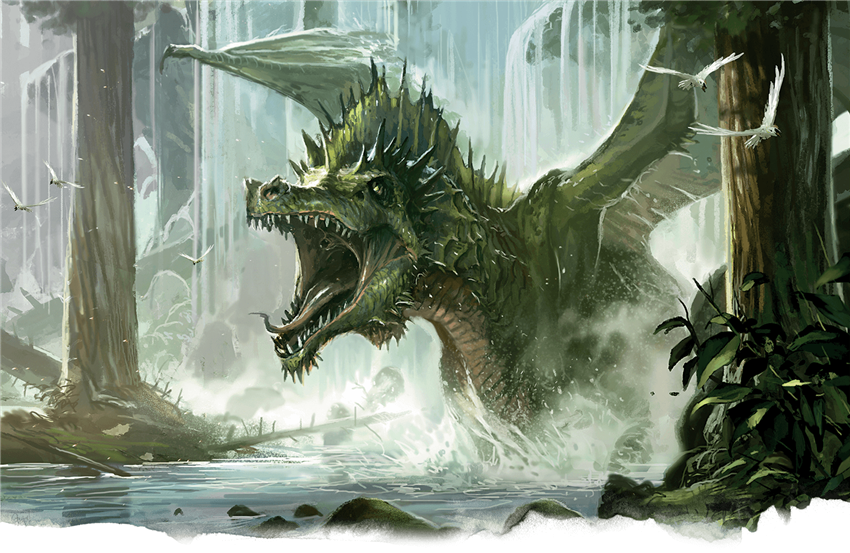
Export as PDF. If you’re playing digitally, it’s vital that you save your document as a PDF and not a DOCX (or whatever your word processor’s file type is) because you’re probably using fancy, non-standard fonts that will break on your friends’ computers. If you’re playing in person and printing your handout, there’s no need to worry about that—but the final step will require you to save it as a PDF anyway!
Get a Textured Background. If you’re creating a handout that features words written on paper (or carved into stone, wood, etc.), then your handout will look much better if you apply a textured background! Usually, lighter backgrounds are better because standard black text appears more legibly on them, as you can see in the written handouts in Curse of Strahd. For paper handouts, let me recommend assets by Critical Role and Explorer’s Guide to Wildemount cartographer Deven Rue! Her “Digital Paper” assets are high-quality scans of real paper that she’s made herself. They’re available to her Patreon patrons.
Deven’s fantasy paper assets come highly recommended because of their impressive resolution. There’s no guarantee that assets you find on the internet will be the size you need, and stretching too-small assets will often make them look blurry or otherwise unpleasant. Other textures (like cloth, stone, wood, etc.) are harder to find, but I have faith that you can find them on the internet!
Assemble it in GIMP. This step may require you to download a program you’ve never used before, but it’s highly worth it. GIMP is a free image-manipulation software available for Windows, Mac OS X, and Linux. It’s not quite as powerful as Photoshop, but it will work fantastically for our purposes.
Once you’ve downloaded and installed GIMP, run the program without opening a new document. Now, drag the PDF you created earlier into the window. This will open up a window asking you how you'd like to import your PDF; all you need to do is make sure your page resolution is set to 300 pixels per inch and select Import. If you select a lower resolution, your original document will get blurry. This will turn your PDF into an image file that you can manipulate in GIMP. If your PDF has more than one page (mine has two, for instance), it will open each page as a separate layer. You can click the “eye” icon in the Layers pane to hide or show layers.
Now, drag whatever paper texture you found into the document. If it’s a horizontal image, you may want to rotate it one-quarter turn by right-clicking on the image, going to Layer, going to Transform, and going to Rotate 90 degrees Clockwise.
Now that you have a vertical page texture, right click on the image again. Then go to Layer and click on Scale Layer. Click on the “chain link” icon so that it looks like a broken chain link. This stops the picture from scaling proportionally. Now change the units to Inches and enter 8.5 in the width box and 11 in the height box. Click Scale and your paper texture will now be the exact size of your PDF pages.
Go to your paper texture in the Layers pane and right click on its layer. Select “Add Alpha Channel”. This will give that layer a transparent background. Now, click the “eye” button on that layer to turn it invisible so that you can see the text and images on your original document. Go to the toolbox on the left side of your screen and click on the Free Select Tool. Click on the image and draw a rough rectangle around your text and images, like you’re creating a border around your text. It doesn’t have to be perfect; in fact, a few imperfections will make it look more natural.
Once you’ve connected the beginning of your free-select line and the end of the line, click the Rectangle Select tool in the toolbox. This will select the region you’ve outlined. Now that you have an area selected, right click on the image, go to Select, and click Feather. Set your feathering to 100 (this is a value you can play around with to your personal taste). Now, click the “eye” button on your paper texture layer. Then right click on the image, go to Edit, and click on Clear (or hit the Delete key on your keyboard). This will erase the feathered selection, creating a parchment textured border that gently fades to white.
Now, right click on your freshly edited page texture in the Layers pane and select Duplicate. Arrange your layers so that one page texture is above page 1 of your document, another is above page 2, and so on for all the pages in your handout. Now right click on your topmost page texture and click Merge Down. This will combine your outline and your page. Do this for all of your textures. Now you’re ready to export your PDF.
Go to File and click on Export As. Make sure that your filename has “.PDF” at the end. When you click export, make sure the “Layers as Pages” and “Reverse Page Order” boxes are checked. Voila! Now you have a beautiful handout with the aesthetic illusion of being written on fantastical, aged paper while still having all the clarity of being printed in black and white. Even better, this method saves a TON of ink if you’re printing it out, compared to printing a fully textured page.
Have you ever created handouts for your players before? Share some of your creations in the comments!
Create A Brand-New Adventurer Acquire New Powers and Adventures Browse All Your D&D Content
 James Haeck is the lead writer for D&D Beyond, the co-author of Waterdeep: Dragon Heist, Baldur's Gate: Descent into Avernus, and the Critical Role Explorer's Guide to Wildemount, a member of the Guild Adepts, and a freelance writer for Wizards of the Coast, the D&D Adventurers League, and other RPG companies. He lives in Seattle, Washington with his fiancée Hannah and their animal companions Mei and Marzipan. You can find him wasting time on Twitter at @jamesjhaeck.
James Haeck is the lead writer for D&D Beyond, the co-author of Waterdeep: Dragon Heist, Baldur's Gate: Descent into Avernus, and the Critical Role Explorer's Guide to Wildemount, a member of the Guild Adepts, and a freelance writer for Wizards of the Coast, the D&D Adventurers League, and other RPG companies. He lives in Seattle, Washington with his fiancée Hannah and their animal companions Mei and Marzipan. You can find him wasting time on Twitter at @jamesjhaeck.








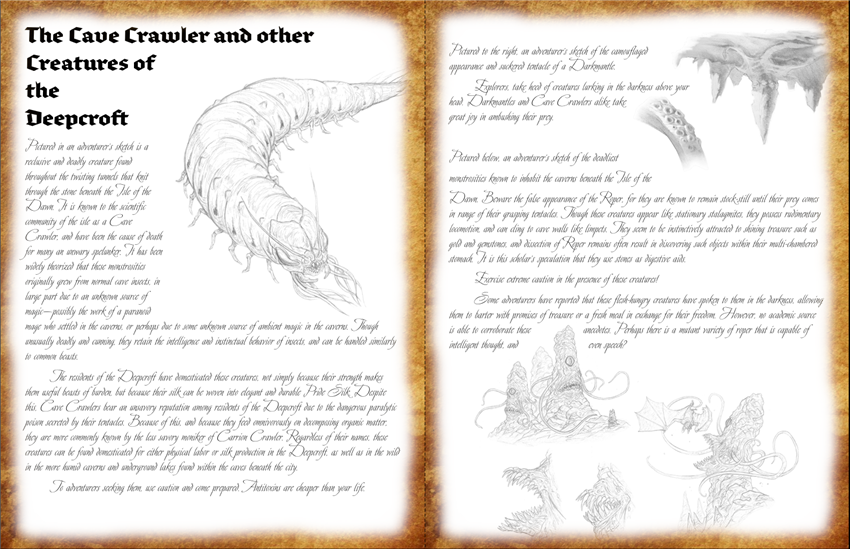
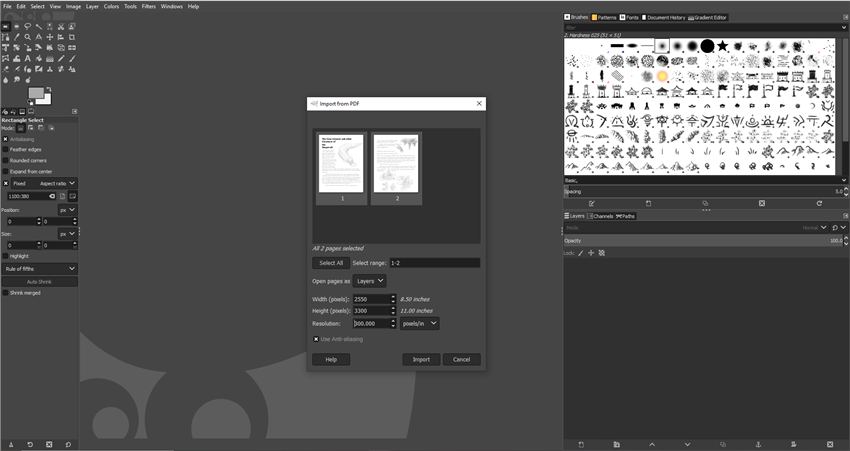
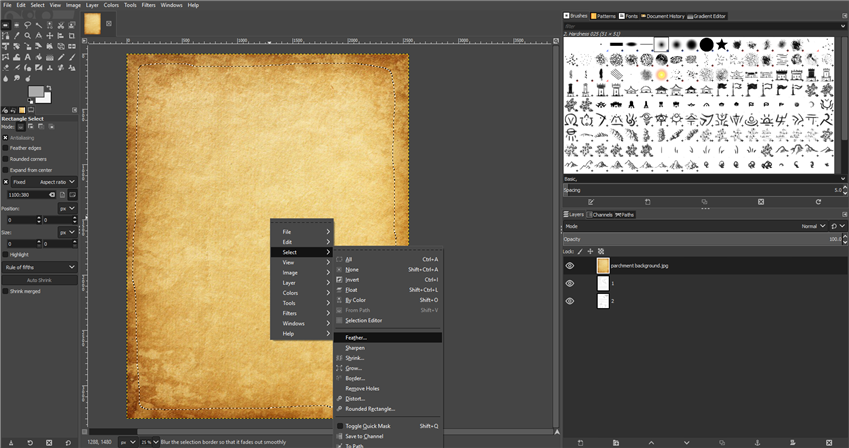
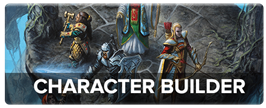
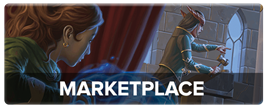
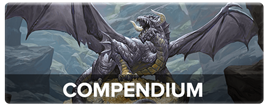
-
View User Profile
-
Send Message
Posted Jun 4, 2020I discovered a simple way in MS Word to take a full-color illustration and make it look like a sketch. Click on the image in your document, and under Picture Format in the menu, choose Artistic Effects. The third option from the left on the top row is Pencil Grayscale. It turns a vibrantly colored illustration into a rough b&w sketch. To make the page look like parchment, do Page Color and select Fill Effects. Choose patterns and select foreground color of soft yellow or orange, and background color of light gray. So much faster than using desktop publishing software.
-
View User Profile
-
Send Message
Posted Jun 4, 2020I've generally just soaked the paper in coffee or tea and crumpled it up into a ball, then smoothed it out and baked it until it was dry in the oven. Sometimes i'd burn the edges if needed to make it seem like it had been through a lot. A few key burn holes can really make for a clue that is almost enough to resolve a mystery.
-
View User Profile
-
Send Message
Posted Jun 4, 2020The 1e Monster Manual was almost all amateurish line art, and frankly, most adventurers would not have the skills to do the line art in the 5e MM anyway. Perspective in art wasn't even a thing until the Rennaissance, so hit or miss whether that fits any given DND Setting anyway. Maybe it's more suitible for Eberron than for Birthright or Grayhawk. For Theros, you might do something in the style of red or black grecian pottery for some in-world style.
-
View User Profile
-
Send Message
Posted Jun 4, 2020This is a great guide!! The only thing I would recommend to people including artwork in their handouts is that they,
1. Ask the artist for permission to use their art. Some artists will have a note on their profile/description of the piece regarding personal usage of their art, but if they don't just send them a message explaining what you'd like to use their art for. If you want to share your handouts online be sure to let them know you plan on doing so. This also applies to other resources (i.e. Deven Rue's fantasy paper textures or an original font) as well. Most of the time the artist will agree and be very grateful that you asked!
2. If you have the artist's permission to use their art don't forget to CREDIT THE ARTIST!!! Do this by including their name/handle on the back of your handout, sneaking it into a corner of the page, disguising it as an "artist's note" under the drawing, etc. If you use other artistic resources (i.e. Deven Rue's fantasy paper textures or an original font) don't forget to include credit for those too!
3. When you're done creating your hand out, show the artist/s your work! It might just make their day to see how folks transform their work.
-
View User Profile
-
Send Message
Posted Jun 4, 2020I'm working on a campaign for some friends when our current one ends, and I love this! Even as a player, I made Bardic Inspiration cards with the rules and die printed on them to hand to people when I give them Bardic Inspiration, and they lost their shit. I'd love to give them something like this, I think they'd love it. And as someone who loves making things for D&D, I would have so much fun making these types of handouts.
-
View User Profile
-
Send Message
Posted Jun 4, 2020If you have photoshop you can change images to look like pencil sketches.
-
View User Profile
-
Send Message
Posted Jun 6, 2020Excellent article, James! Thank you for all you do for the community...
-
View User Profile
-
Send Message
Posted Jun 7, 2020How do you get the monster clipart?
-
View User Profile
-
Send Message
Posted Jun 7, 2020Great article, James! Some very useful advice here.
-
View User Profile
-
Send Message
Posted Jun 8, 2020A fantastic article! Thank you! I love creating tangible handouts, items and props for my players to create a more immersive game at the table, and this is a genius idea! I’ll definitely be using this in the future! Monster research sheets!
-
View User Profile
-
Send Message
Posted Jun 9, 2020Thank you! This is so useful for future campaigns I may run. Not having been an Experienced DM, I can't tell when I am describing things in a boring manner or for way too long. Though I am curious, is GIMP free to install/download?
-
View User Profile
-
Send Message
Posted Jun 9, 2020Yes! GIMP is a free program. It's the first image editor I ever used, and it's served me well. There are lots of good, simple tutorials on YouTube and on the GIMP website, too. Photoshop is more powerful, and its tools are more sophisticated, but GIMP is more than enough for a DM on a budget.
-
View User Profile
-
Send Message
Posted Jun 9, 2020I haven't seen this posted yet, but I've been using this site for fonts for the past 10 years. 100% free. dafont.com/
-
View User Profile
-
Send Message
Posted Jun 12, 2020A nice way is to use https://homebrewery.naturalcrit.com/
It uses markdown and has all kind of neat premade stuff for dnd.
-
View User Profile
-
Send Message
Posted Jun 13, 2020Great resource that I'll use in the future! I've run DnD 5E through FantasyGrounds for the past five or six years so I'll likely use this for digital handouts.
However, there was one time I ran a one-off adventure for my sister and her friend who has since become her boyfriend. I decided to do more than just describe to them a missive sent out seeking adventurers to go look for some info in a dungeon. I know how to write in calligraphy though, unfortunately, I ran out of time to write out the message by hand. However, I used the fancy parchment I had for it and printed out the intended message. Then I dug an old wax seal I had out of mothballs and sealed the message with the wax seal. (I also learned to be very careful because apparently, yes, wax can burn.) Rather than reading them the message, I handed them the sealed message. They thought that was so awesome.
If I ever ran the game in person again, I'd probably find a more generic thing I could use for a wax seal than the monogram I had (so I had to fit the message to the monogram), but I'd probably do the sealed messages again. Though this time I'd give myself enough time to write them out by hand. XD
-
View User Profile
-
Send Message
Posted Jun 16, 2020My DM did an awesome handout where he had a stack of papers in the middle of the table, at a certain point in the session, he had our changeling leave the room briefly (we had just found other members of his planet who had been hiding in the city, he had been on our planet for 5 years and had no idea if anybody made it off his planet alive). The DM then handed one packet to each of us.. and they were a script! The ship these changelings had arrived on actually had security footage of the last moments of the planet's existence (before it was destroyed by Hadar). Each player was assigned a role, and when he entered the room we acted out the security footage.... Really great way to keep PCs engaged during a super intense moment in someone else's arc. We were the ones to tell him pretty everyone he knew and loved was dead... Made for an INSANE session.
-
View User Profile
-
Send Message
Posted Jun 16, 2020bro that is so freakin sick. I just use google drive and stuff, but you went all out. dang.
-
View User Profile
-
Send Message
Posted Jun 17, 2020Thank you! :D
-
View User Profile
-
Send Message
Posted Aug 16, 2020Making handouts is AMAZING and so immersive, I used to create handouts in Adobe Illustrator to practise for school. It gives the game so much depth. One campaign the major plot twist, that the villain was the long forgotten and lost father of my friends Charakter was written down in the found dairy. Of course this one was a handout. It was an amazing feeling to watch him rad it, seeing the terror and fear in his eye as it dawns him.
-
View User Profile
-
Send Message
Posted Oct 2, 2020With the share functions on video chat sites like zoom and MS teams, this method could really make my home brew games feel more alive. Otherwise, I've never used handouts before. They do give you some handouts for some adventure modules, but some modules have better handouts than others.